3 basic building blocks
| |
|
The basic components of an impact map are systems, actions and things. In order to draw a map that is logical and consistent, these components should be represented as shown below. | |
 
|
|
|
The remaining diagrams on this page are detailed and may be hard to read.You can click on these diagrams to make them larger. Alternatively, you can view this page as a PowerPoint file with slide notes. | |
Example: printing a letter | |
|
As a basic example, these components could be used to describe the flow of materials for a letter that is printed, sent, delivered, read and then discarded. Firstly, consider the materials that flow into and out of the office where the letter is printed and assembled. The printer uses blank paper and ink, and the output is assembled together with an empty envelope. | |
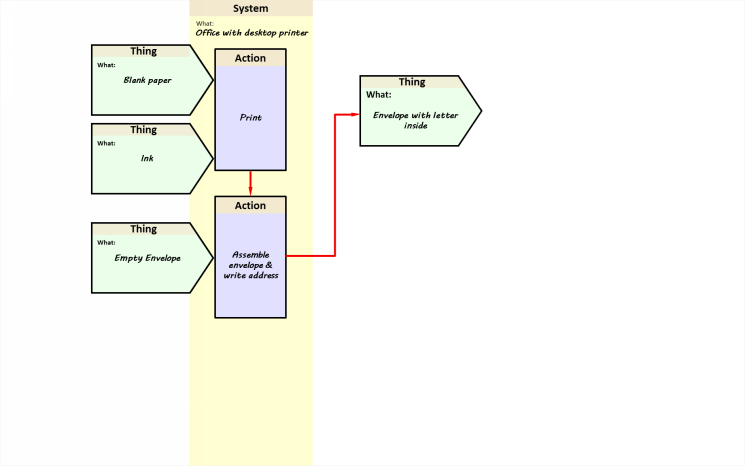 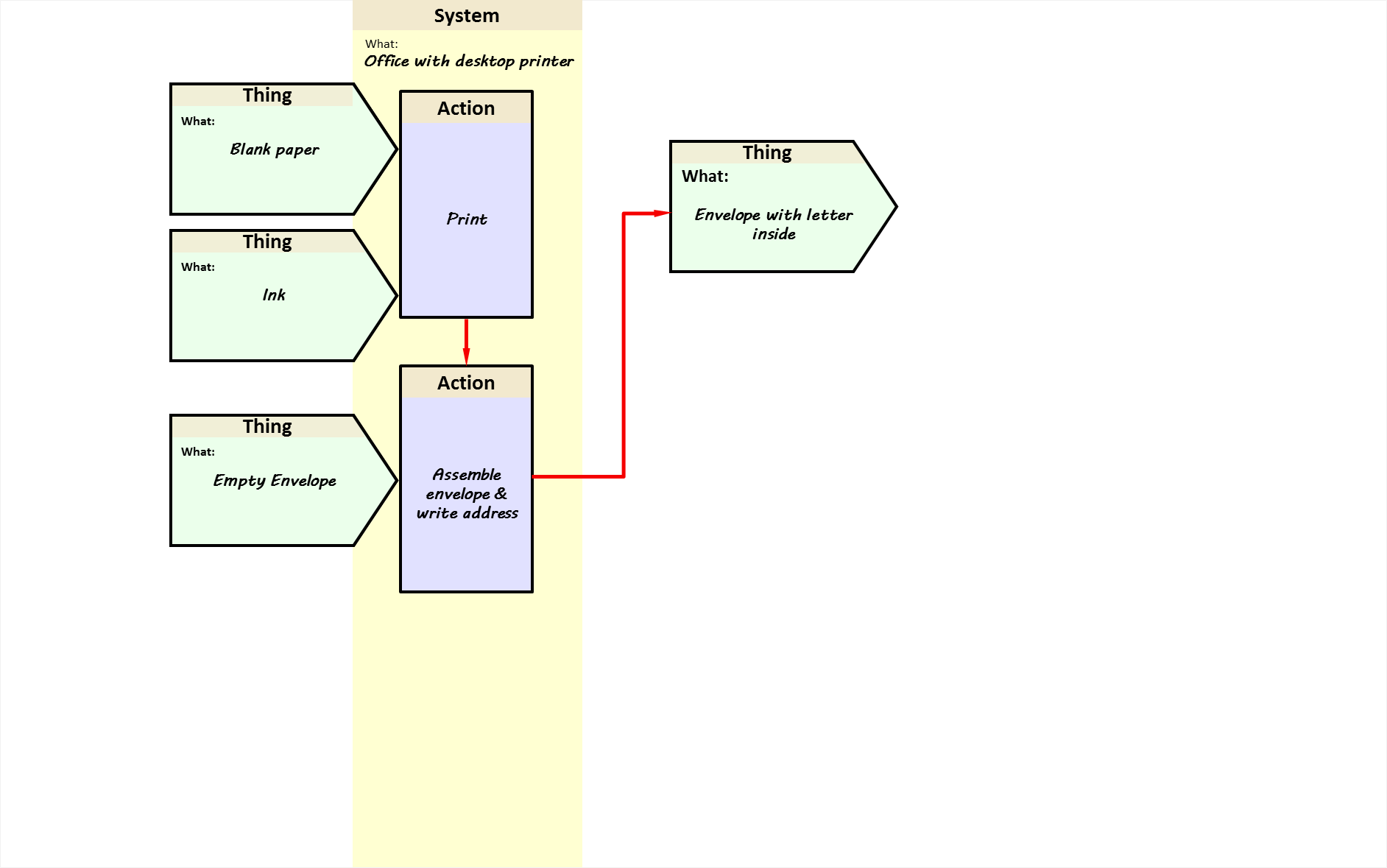
|
|
|
However, the material inputs to the printing process must come from somewhere, so a production and transport action box is added in front of all the inputs. Furthermore, the office consumes electricity to support the printer, so this is also added | |
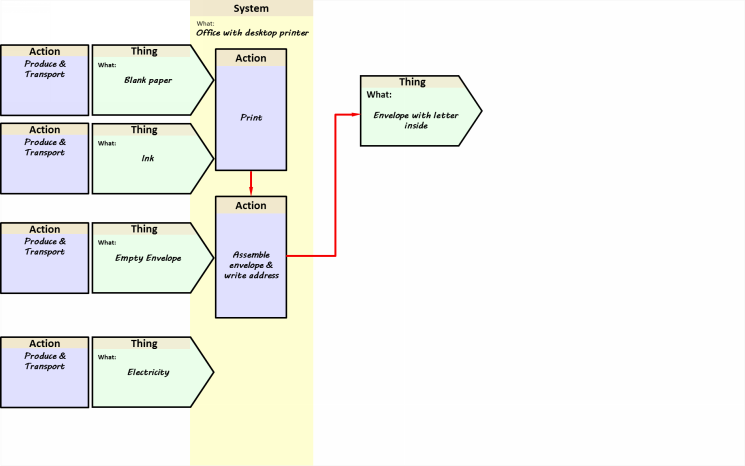 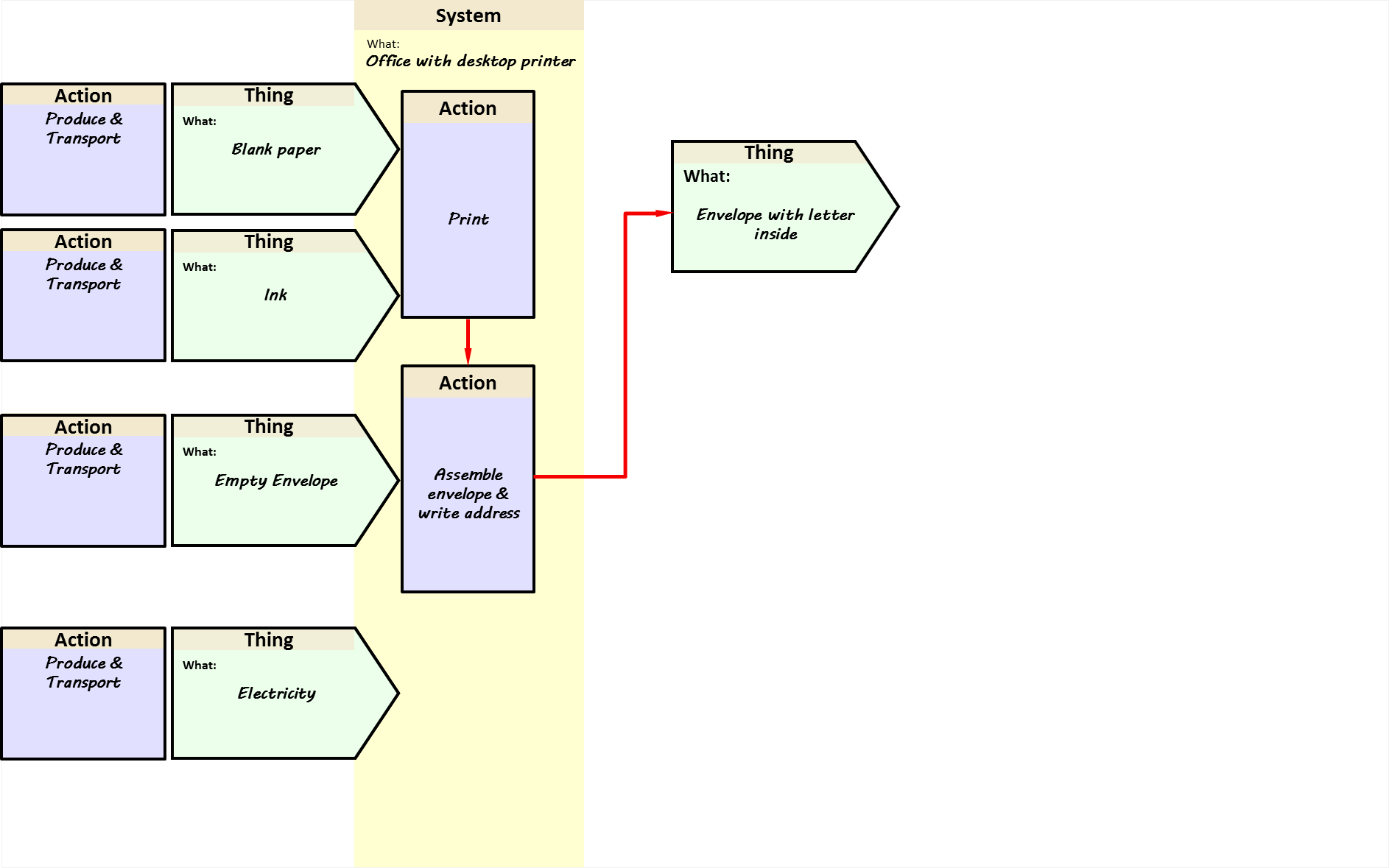
|
|
Example: Delivering a letter | |
|
Now consider the postal system that delivers the letter from the office to the recipients house. This postal system will likely consume electricity and fuel in order to transport the letter. | |
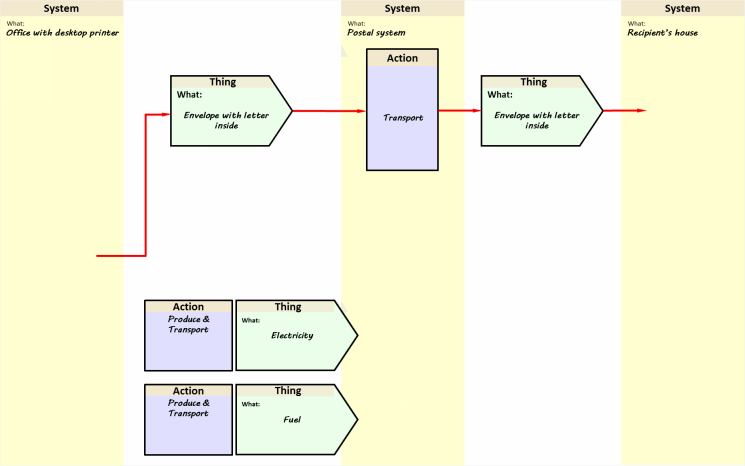 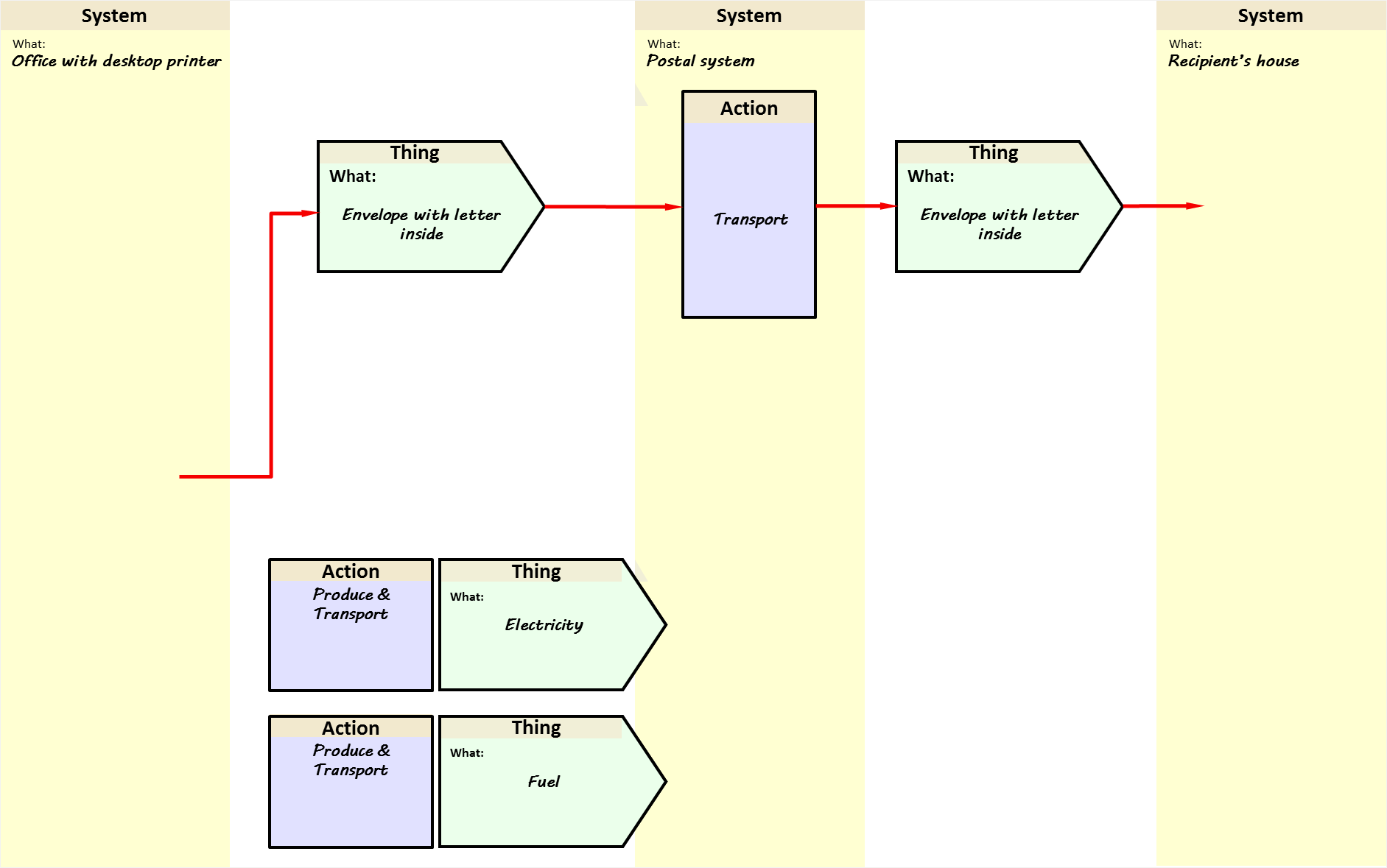
|
|
Example: Receiving a letter | |
|
Finally, consider the recipients house, where the letter is opened and read, and the waste materials are discarded. | |
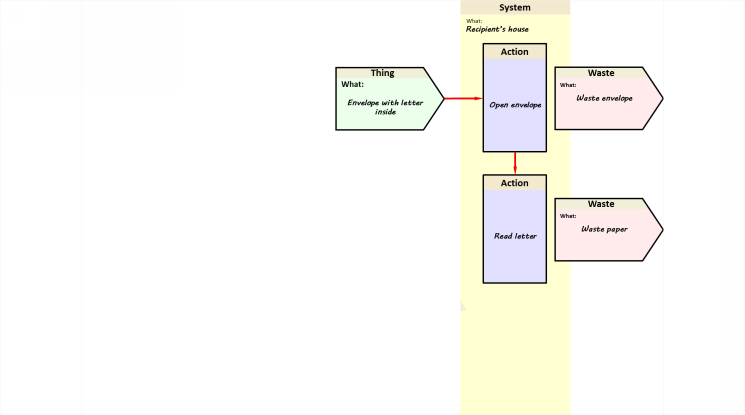 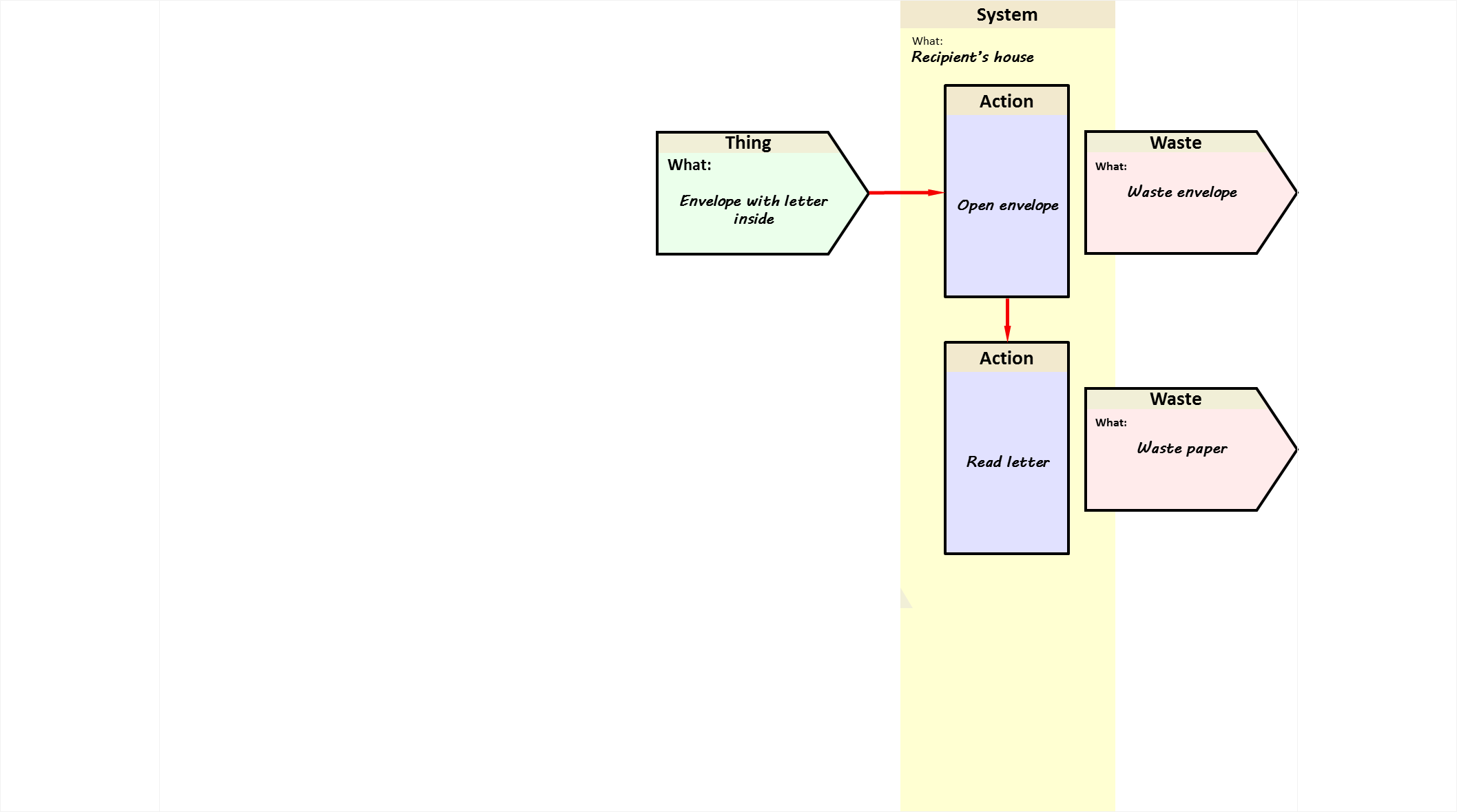
|
|
|
The waste materials must go somewhere, so a final actions are added to transport and process or store the waste. | |
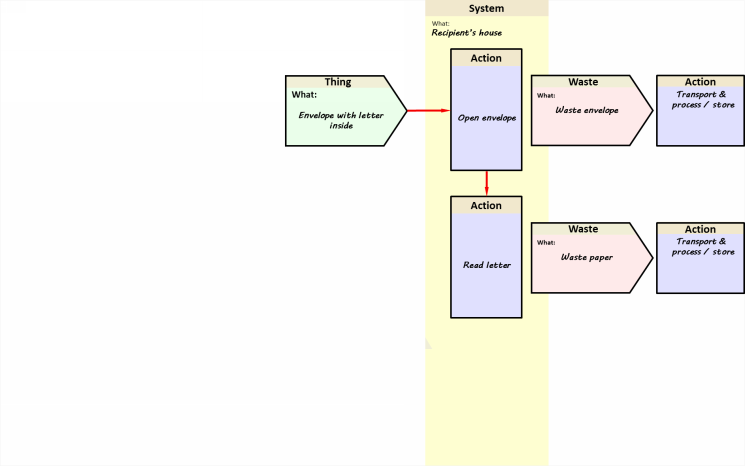 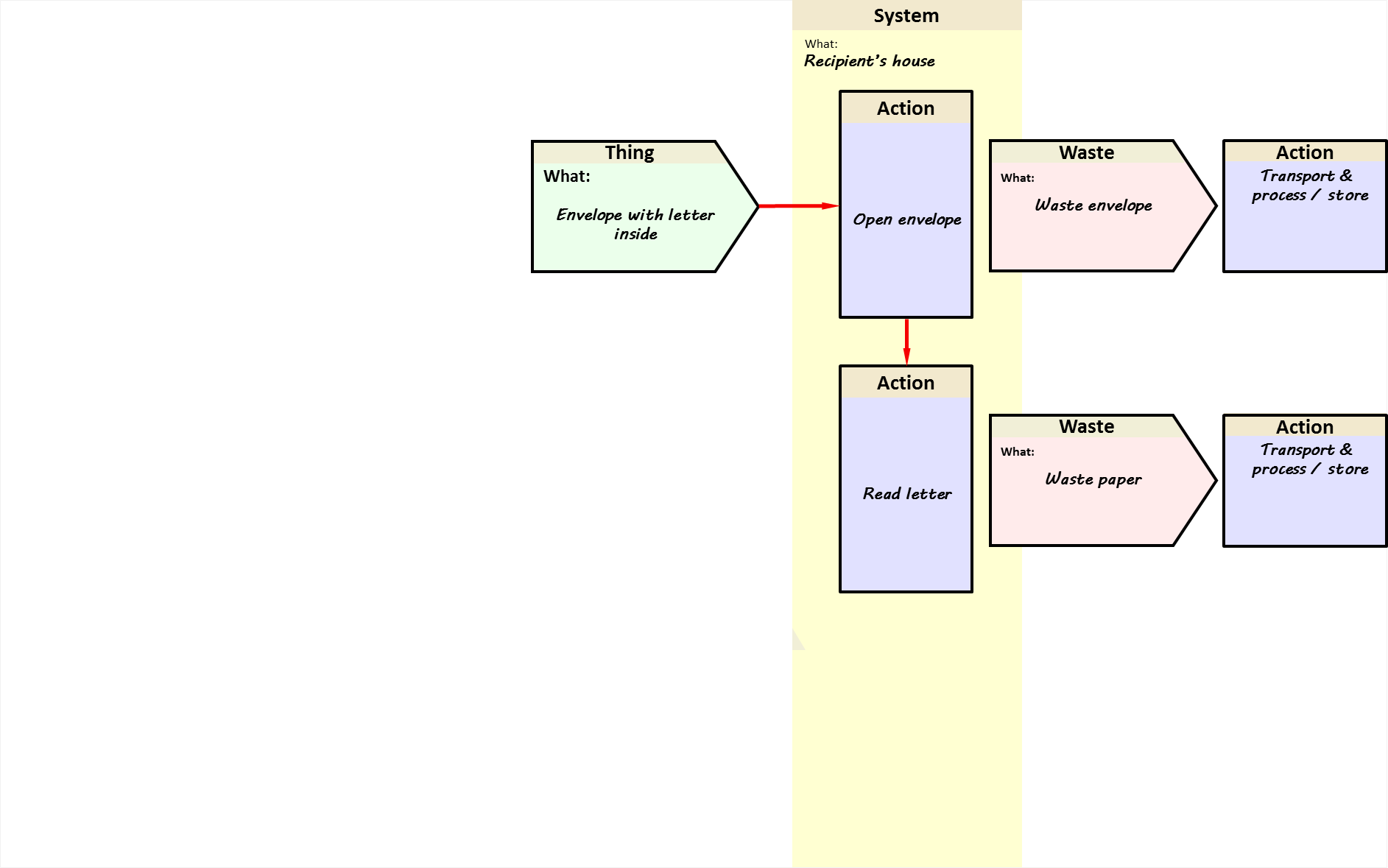
|
|
Full diagram | |
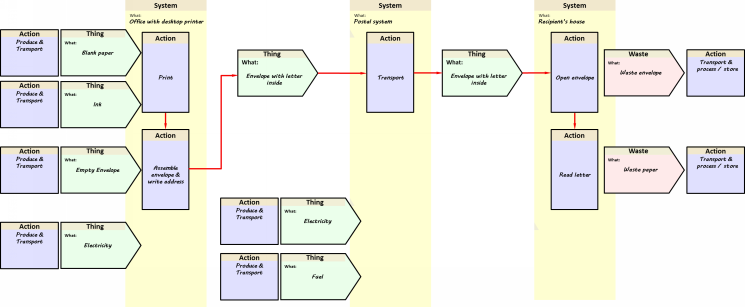 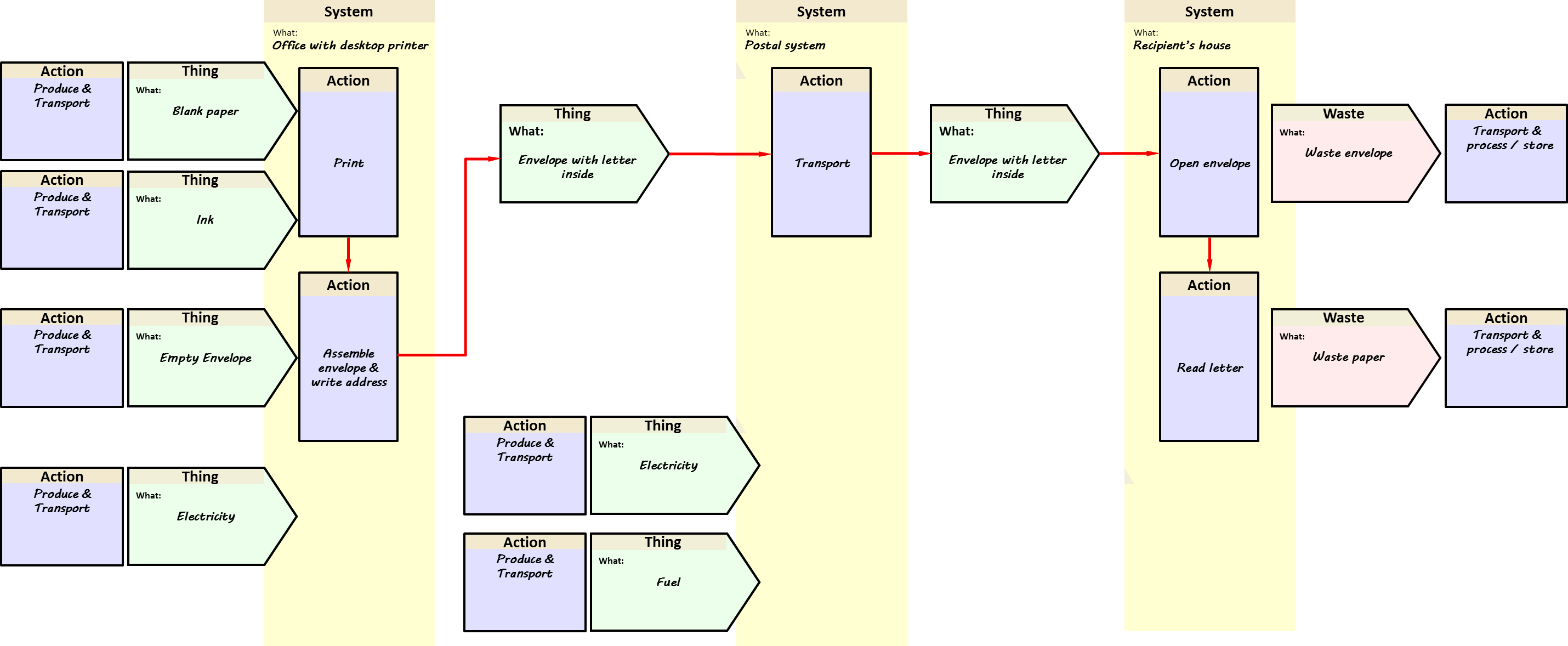
|
|
Feedback
We would welcome your feedback on this page:



